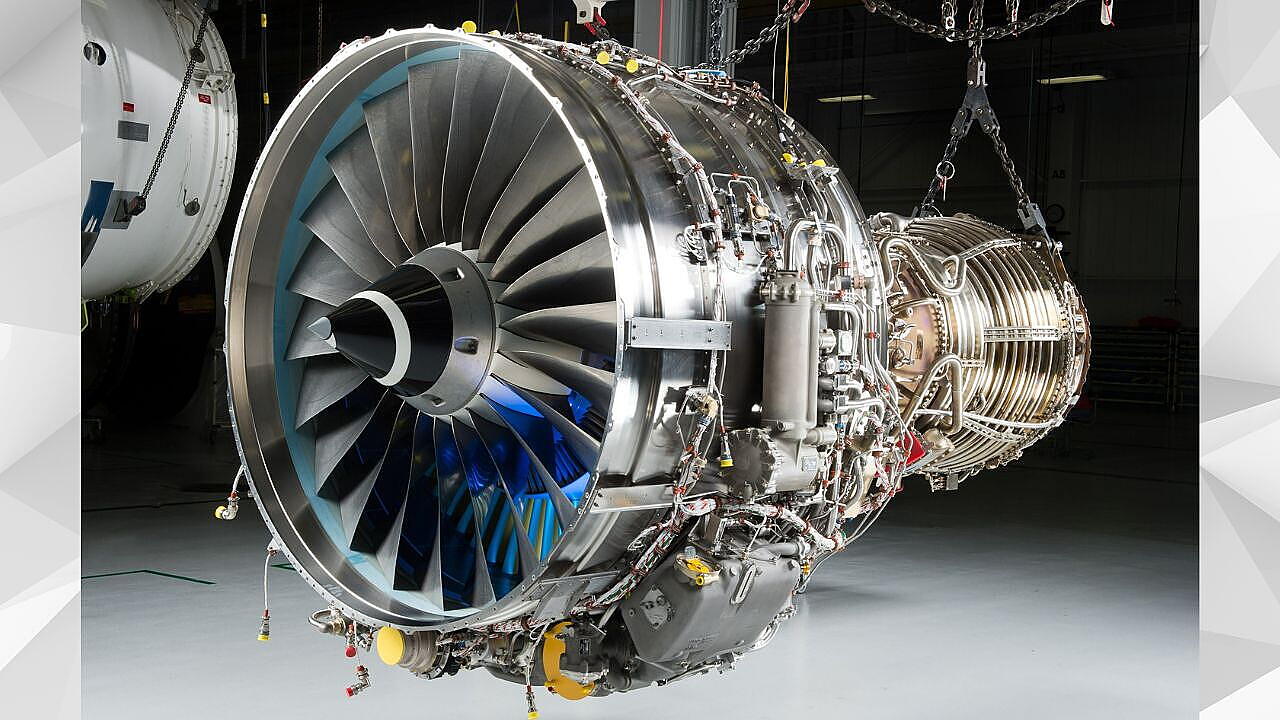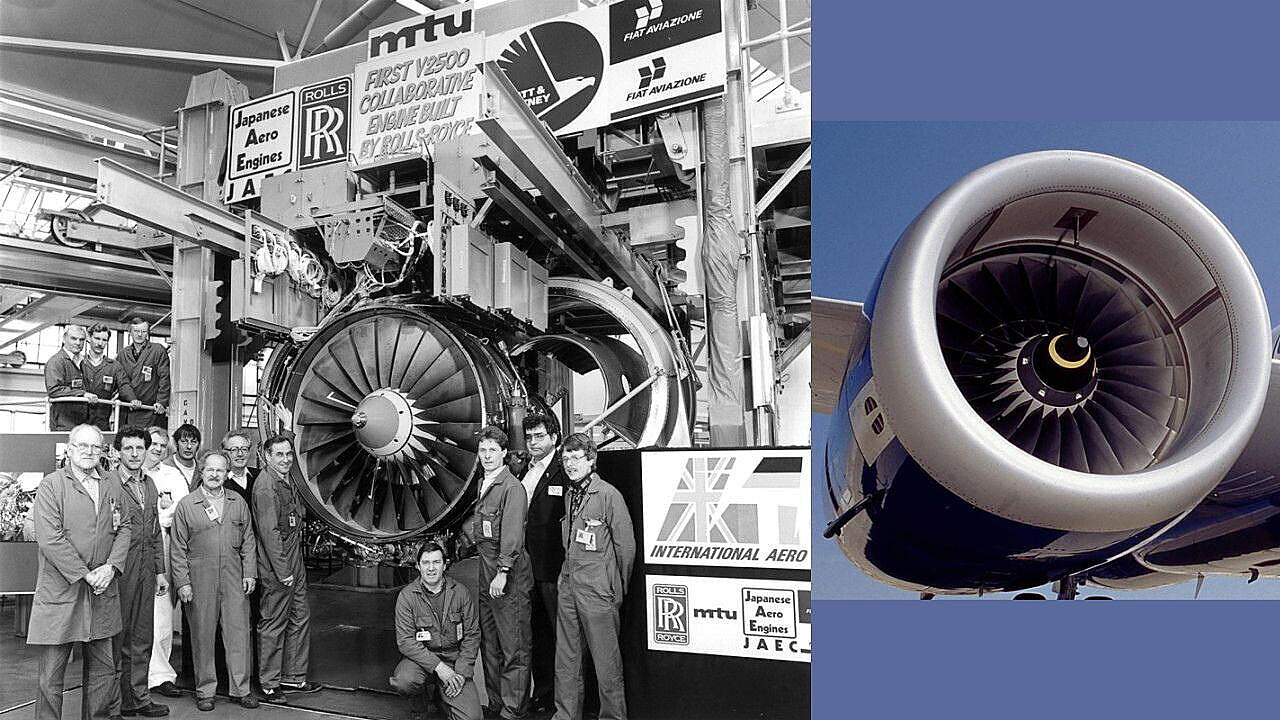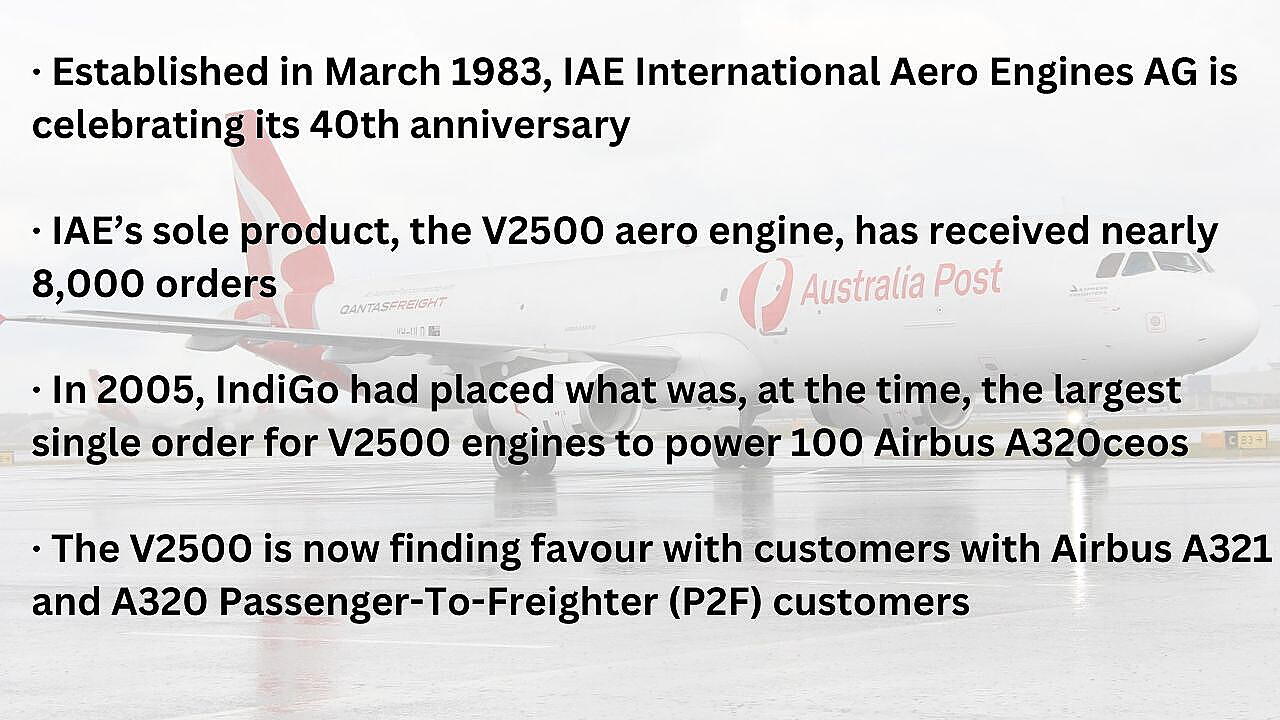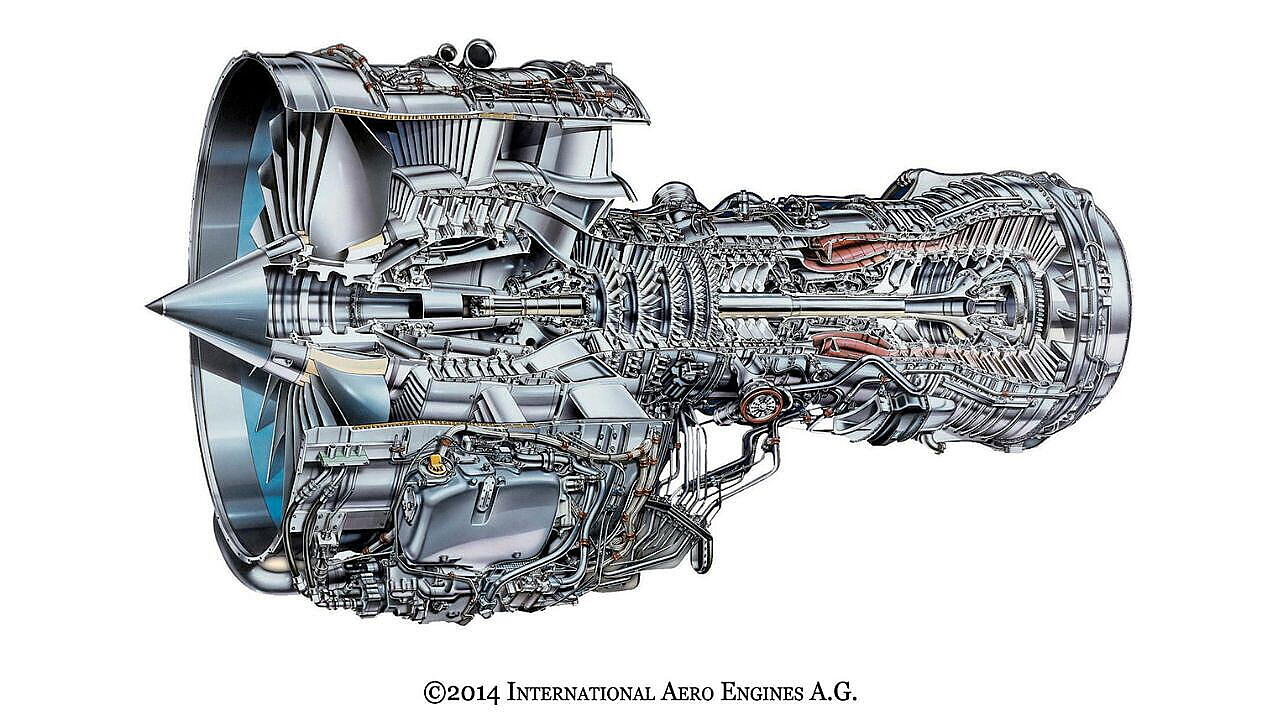
International Aero Engines AG (IAE) is celebrating 40 years since the multinational consortium was established, which brought together five of the world’s leading aero engine manufacturers – Pratt & Whitney (USA), Rolls-Royce (UK), Japanese Aero Engine Corporation, MTU Aero Engines (Germany) and FIAT (Italy).
The JV was originally established to develop a new, cleaner, quieter and more fuel-efficient jetliner engine in the 150-seat single-aisle segment. IAE developed the V2500 aero engine in five years, bringing to market a new two-shaft turbofan targeted at short-to-medium-haul transports. Despite the quick development cycle, IAE created a commercial aero engine that was ahead of time.
The V2500 was chosen by Airbus in 1984 to power its new A320ceo family of single-aisle jetliners. India was an early customer for the V2500, with then-state-owned Indian Airlines ordering the engine in 1985 when it was still in development for its A320 fleet.

The V2500-A1 engine entered service with the launch customer, the Slovenian carrier Adria Airlines, in 1989. The V2500 also powered 116 Boeing MD-90 aircraft with Delta Airlines, entering service in 1995. IAE went on to deliver over 7,800 engines, which today still power more than 3,500 aircraft.
Even today, the V2500 has an approximately 45% of the A320 family segment share, powering aircraft belonging to about 190 airlines and lessors worldwide. The engines also power approximately 60% of the global in-service A321ceo fleet, with an average fleet age of only 12.8 years. Since it entered into service, IAE’S V2500 engines across all variants have collectively accumulated more than 135 million flights and over 255 million engine flight hours.
Earl Exum, President, IAE and Vice President, Mature Commercial Engines, Pratt & Whitney, said, “The V2500 is a workhorse of the aviation industry and has grown into one of the most successful commercial aerospace programmes of all time. The V2500 wouldn’t be the triumph it is without our IAE collaborators, customers, and suppliers. With the IAE collaboration agreement extension to 2045 and a substantial fleet of V2500s in service today, this joint venture has secured its standing as a global aviation leader for decades to come.”
Continuous Improvement Philosophy
One of the most important reasons for the V2500’s success has been IAE’s commitment to continuous innovation and improvement of a powerplant, keeping it relevant in the face of newer and more sophisticated aero engines. The engine has a wide-chord, clapperless fan blade design, providing better tolerance to foreign-object damage. The engine has a 10-stage High-Pressure Compressor (HPC) and 2-stage High-Pressure Turbine (HPT), which yields improved efficiency and long component life. The V2500 turbofan engine family provides thrust in the 22,000 to 33,000 pounds and has proven extremely reliable.

Between 1993 and 2011, IAE released a series of important upgrades to the V2500-A1 across the A5, D5, SelectOne, SelectTwo and E5 variants, offering enhanced reliability, improved fuel efficiency and reduced maintenance costs. IAE has also ensured that the engine has been approved for operation on 50% Sustainable Aviation Fuel (SAF).
The first major performance enhancement was introduced into service in 1993 through the V2500-A5 engine. The next upgrade, the “Phoenix Standard, ' entered service in 1998, incorporating HPT technology developed for the V2500-A5 engine into the V2500-A1 engine, resulting in improved time-on-wing performance. Customers benefit when an engine has greater time-on-wing performance as they can continue with revenue-generating flights instead of aircraft downtime when the engine is removed.
By the late 90s, IAE had delivered the 1,000th V2500 engine, and it also entered service with the A319 for United Airlines. By 2002, IAE had delivered the 2,000th V2500 and the 3,000th engine in 2006, with large orders from Chinese carriers such as Sichuan Airlines, Hainan Airlines, Shanghai Airlines and Shenzhen Airlines.
IAE continued its philosophy of continuous improvement with the introduction of the V2500 SelectOne engine entered service in 2005, and it was also the first engine manufacturer in its class to offer a comprehensive OEM-managed aftermarket service programme. The new offering was immediately successful, and in 2005, IndiGo placed what, at the time, was the largest-ever order for V2500 engines to power its 100 aircraft A320ceo order. In fact, by 2008, over 80% of the A320s operated by Indian carriers were powered by V2500 engines.
IAE’s new V2500 SelectOne engine entered service with IndiGo in 2008, and by 2012, IAE had delivered over 1,500 of these to customers. Many earlier V2500 customers also upgraded their engines to the SelectOne standard. In 2011, IAE announced the V2500 SelectTwo engine, and in the same year, IndiGo took delivery of the 1,000th V2500 SelectOne engine.
A year later, the 5,000th V2500 engine was delivered to SilkAir, and IAE also achieved the milestone of 100 million flying hours for the engine programme. IndiGo was also the first airline in the world to operate V2500-powered A320 with Sharklets in 2013. The Sharklets are performance winglets fitted on A320ceo jetliners.
Rolls-Royce exited the programme in 2012, with Pratt & Whitney purchasing the former’s stake; however, it continued to support IAE as a strategic supplier for the manufacture of parts and engines, as well as supplying MRO services.
A New Avatar
In 2011, Embraer Defence and Security became the first military customer for the V2500-E5 engine, selecting the powerplant for Brazilian Air Force’s new KC-390 multi-role tanker/transport aircraft. The V2500-E5 delivers 31,000 pounds of thrust, allowing the KC-390 to perform a variety of missions, including cargo and troop transport, aerial refuelling, aerial firefighting, search and rescue, medical evacuation, and humanitarian disaster relief.
The V2500-E5 engine variant remains in production today for the KC-390, which Portugal and Hungary, both NATO nations, have also ordered. The Netherlands Ministry of Defence also announced the selection of a fleet of five C-390 Millennium aircraft in June 2022. “As a medium-weight, multi-mission tactical aircraft, the V2500-E5-powered C-390 provides versatility and dependability, even in challenging environments,” says Bosco da Costa Junior, President & CEO, Embraer Defence & Security.

Relevant For The Future
The V2500 is now finding favour as the powerplant for A321 and A320 Passenger-To-Freighter (P2F) conversions. Over 70% of V2500-powered commercial aircraft are still under 15 years old, which means they can still have a long service life as freighters.
The engine has powered the first A320 and A321 P2F conversions, offering a fuel and payload-range advantage over the competing engine. Compared to a Boeing B737-800BCF, an A321P2F can carry up to 3.5 tonne more cargo and save approximately 240 gallons per trip relative to a Boeing 757 Freighter powered by Rolls-Royce RB211-535E4 engines.
The first A321P2F powered with V2500 engines was delivered to Qantas Freight in October 2020. The engine delivers a 3% fuel advantage to P2F customers and lower noise emissions. It is also the only engine on the A321ceo which can meet Chapter 4 noise standards straight out of the box.
V2500 operators also benefit from the established global network of 17 Maintenance, Repair And Overhaul (MRO) facilities. These include nine IAE partner facilities, three managed by Pratt & Whitney and its joint ventures: the Turkish Engine Center in Istanbul, the Shanghai Engine Center in China and the Christchurch Engine Center in New Zealand. Pratt & Whitney and IAE have also been enhancing services for the V2500 engine, including offering long-term agreements, fixed price services and transactional solutions, and increasing workscopes and payment options.
Despite the rapid technological change facing the aviation industry, IAE enters its 40th year with many more years of business for its trust-worthy V2500 engine, which continues to earn the respect of its operators. The last of these engines are expected to end their service around 2060.
Also Read:
Boeing To Expand ecoDemonstrator Flight Test Programme
GE Aerospace Introduces New Blade Inspection Tool For GEnx Engines